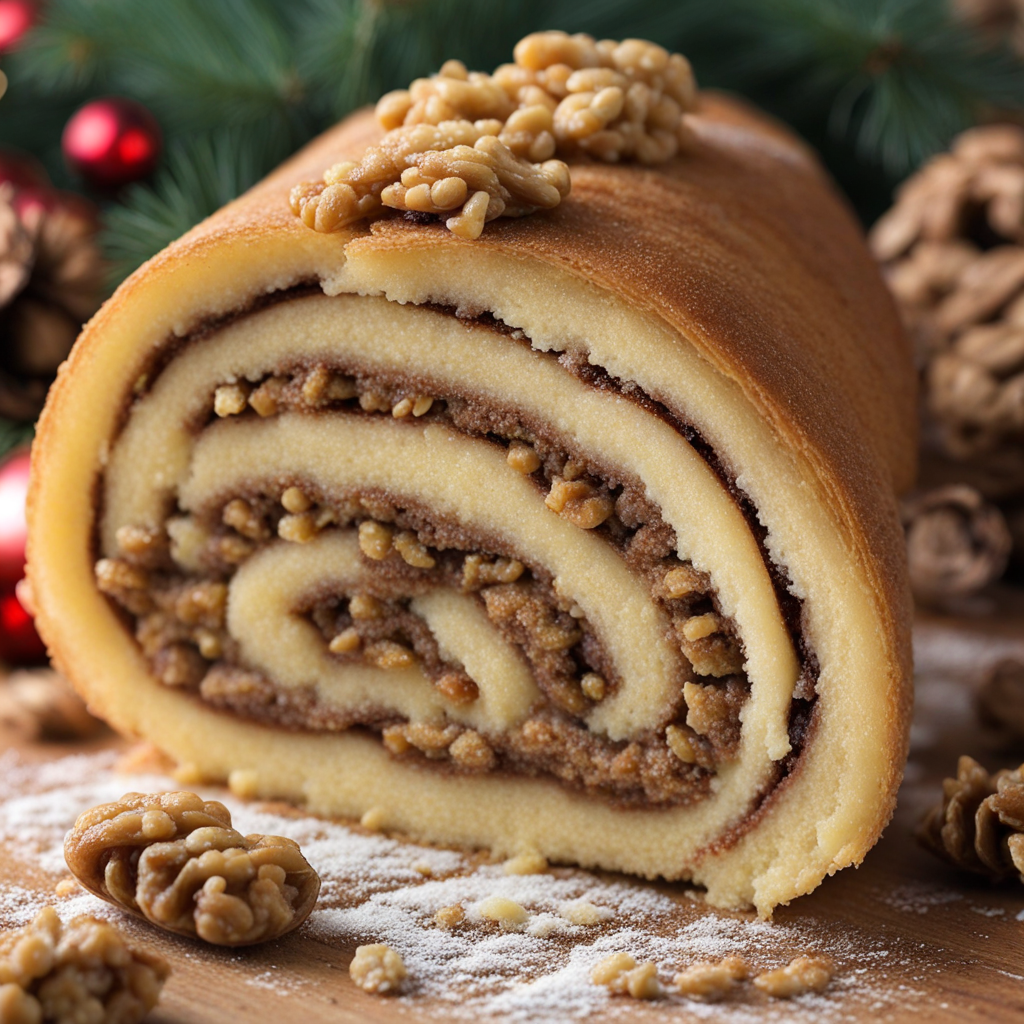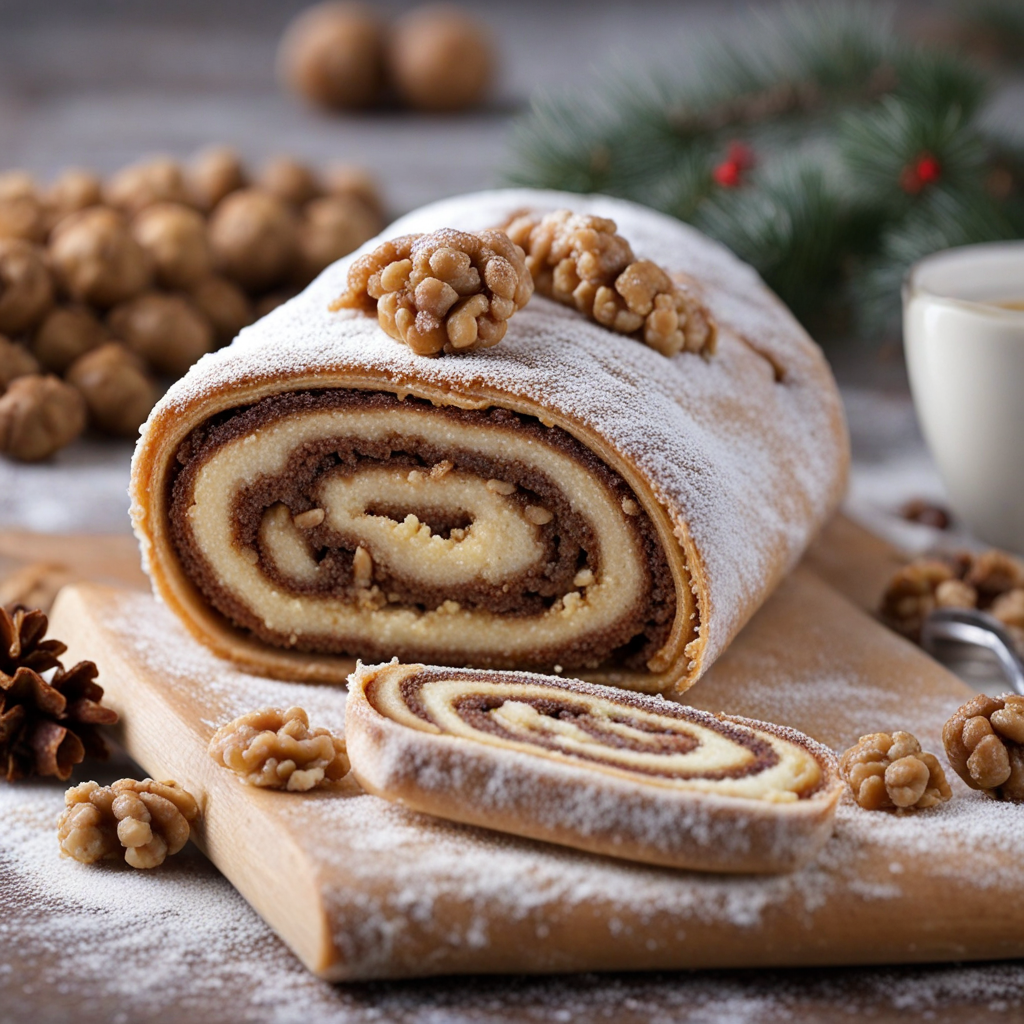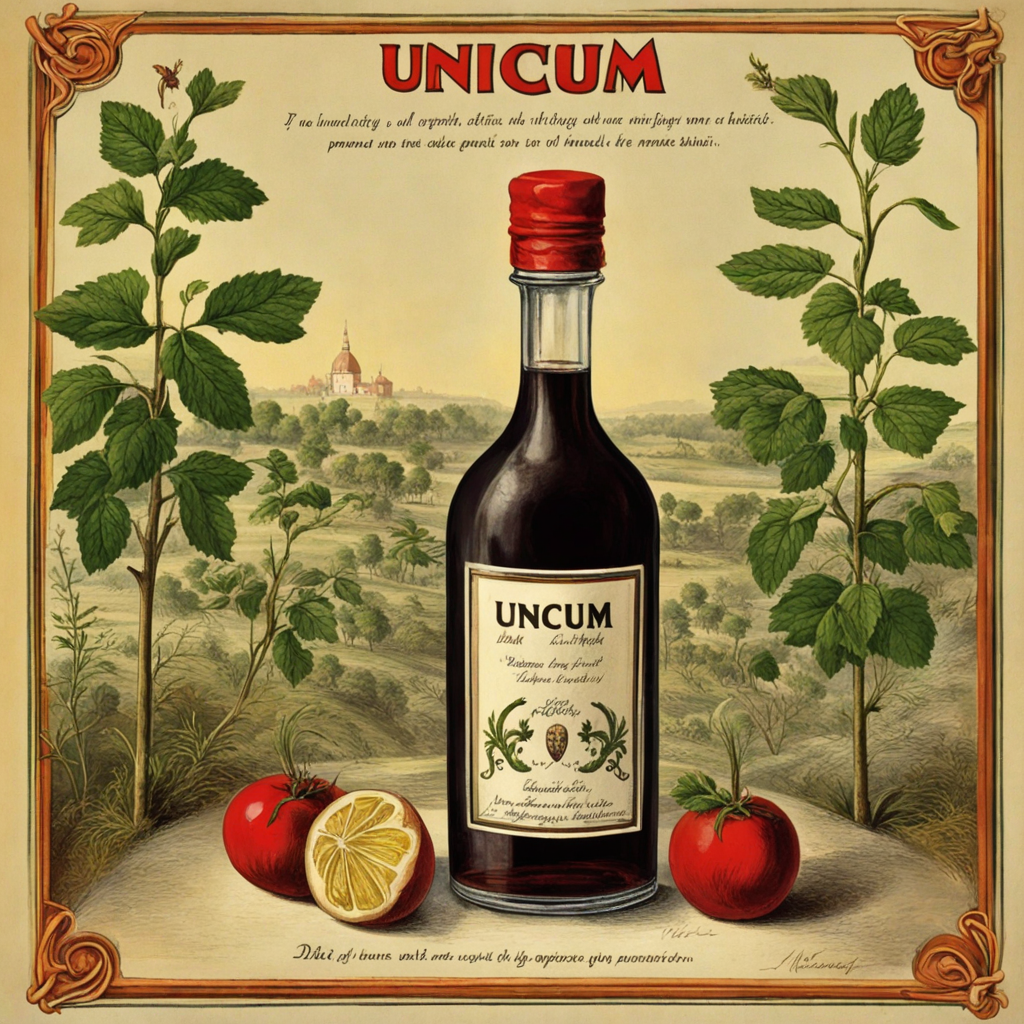Diós Beigli
Diós Beigli is a traditional Hungarian pastry that captures the essence of the country's rich culinary heritage. This delightful treat is a rolled dough filled with a luscious walnut filling, creating a harmonious balance of flavors and textures. The dough is crafted from a buttery, slightly sweet yeast base that yields a tender and flaky crust. The filling, made from finely ground walnuts, sugar, and a hint of vanilla or lemon zest, provides a nutty depth that complements the dough beautifully. This pastry is often enjoyed during festive occasions, particularly around Christmas, making it a beloved symbol of Hungarian tradition. The preparation of Diós Beigli requires a careful technique, as the dough must be rolled out thinly and evenly to encase the rich walnut filling. Once filled, the dough is rolled into a log shape, brushed with egg wash for a glossy finish, and then baked until golden brown. The resulting pastry boasts a delightful crunch on the outside, giving way to a soft, moist interior filled with the aromatic walnut mixture. The warm, inviting aroma that fills the kitchen during baking is enough to make anyone's mouth water in anticipation. As you take your first bite of Diós Beigli, you'll experience a symphony of flavors that dance on your palate. The sweetness of the dough pairs perfectly with the earthy, slightly bitter notes of the walnuts, creating a comforting yet sophisticated taste. Whether enjoyed with a cup of coffee or tea, or as a sweet ending to a meal, this pastry offers a unique glimpse into Hungary's culinary culture. Its rich history and delightful taste make Diós Beigli a must-try for anyone looking to expand their culinary horizons.
How It Became This Dish
The History of Diós Beigli: A Sweet Slice of Hungarian Heritage Diós Beigli, a traditional Hungarian pastry, is a delightful representation of Hungary’s rich culinary heritage. This sweet roll, filled with a luscious walnut paste, is not just a treat but also a symbol of Hungarian culture, family gatherings, and festive celebrations. Its history is woven through the fabric of Hungarian society, reflecting changes in taste, culture, and even politics over the centuries. #### Origins: The Roots of Diós Beigli The term "beigli" originates from the German word "Bügel," which means "to fold." This reflects the pastry’s method of preparation, where the dough is rolled and filled before being folded into a log shape. While the precise origins of Diós Beigli are somewhat nebulous, it is widely believed that this pastry emerged during the 18th century, around the time of the Austro-Hungarian Empire. The influence of German and Austrian baking techniques played a crucial role in its development. The primary filling of Diós Beigli is a mixture of finely ground walnuts, sugar, and milk, which creates a rich, moist texture and a unique flavor profile. Walnuts have been grown in Hungary since ancient times, making them a staple in Hungarian cooking. The use of walnuts in desserts can be traced back to the medieval period, where they were often incorporated into various sweets and pastries. The introduction of refined sugar and the cultural exchange with neighboring countries helped elevate the status of walnut-based desserts, paving the way for the creation of Diós Beigli. #### Cultural Significance: A Pastry for Celebrations Diós Beigli holds a special place in Hungarian tradition, particularly during the Christmas season and other festive occasions. It is often served at family gatherings, weddings, and holidays, symbolizing abundance and togetherness. The preparation of Diós Beigli is a family affair; recipes are often passed down through generations, with each family adding its unique touch. The act of baking Diós Beigli is a way of preserving family heritage. In many households, the preparation begins weeks before Christmas, as families gather to make the dough and fill it with the walnut mixture. The process is as much about the experience as it is about the end product. It fosters a sense of community, as stories and memories are shared over the mixing of ingredients and the rolling of dough. In Hungary, the pastry is often accompanied by other traditional desserts, such as mákos bejgli (poppy seed roll), emphasizing the importance of these sweets in festive celebrations. The juxtaposition of the two flavors—walnut and poppy seed—has become emblematic of Hungarian culinary identity, showcasing the region’s agricultural bounty. #### Development Over Time: From Tradition to Modernity The 20th century brought significant changes to Hungary’s culinary landscape, including the way Diós Beigli is perceived and prepared. While the traditional methods of making Diós Beigli remain cherished, the rise of modern baking techniques and the influence of global cuisine have altered its preparation and presentation. During the Austro-Hungarian Empire, Diós Beigli gained popularity not only in Hungary but also in neighboring regions, such as Austria and Slovakia. The pastry became synonymous with the festive season, and its presence at holiday tables spread across borders. However, the tumultuous events of the 20th century, including the two World Wars and the subsequent communist regime, greatly impacted Hungarian culinary traditions. Many recipes were lost or altered, as people faced food shortages and economic struggles. Despite these challenges, the resilience of Hungarian culture shone through. In the 1980s and 1990s, as Hungary transitioned from communism to democracy, there was a renewed interest in traditional foods. This revival led to a resurgence in the popularity of Diós Beigli and other traditional pastries. Bakeries began to embrace artisanal techniques, and home bakers sought to preserve family recipes. #### Contemporary Adaptations: Reinventing a Classic Today, Diós Beigli is more than just a holiday pastry; it has found its way into cafes and bakeries around Hungary and beyond. Contemporary bakers are experimenting with flavors and presentations, incorporating modern twists while still honoring the traditional recipe. Variations may include the addition of chocolate, citrus zest, or even spices like cinnamon, reflecting the evolving palate of modern consumers. The rise of the internet and social media has also played a role in the pastry’s revival. Recipes are shared online, allowing individuals from different backgrounds to try their hand at making Diós Beigli. Cooking shows and food blogs have introduced this traditional pastry to a global audience, sparking interest in Hungarian cuisine and culture. Moreover, Diós Beigli has become a symbol of national pride. It is often featured in culinary festivals and competitions, demonstrating Hungary's commitment to preserving its culinary heritage while embracing innovation. Chefs and home bakers alike are passionate about showcasing this traditional pastry, ensuring it remains relevant in today’s fast-paced world. #### Conclusion: A Timeless Tradition Diós Beigli is more than just a sweet pastry; it is a testament to Hungary’s rich history, cultural identity, and the enduring bonds of family and tradition. Its evolution over time reflects the adaptability of Hungarian cuisine, showcasing how traditional foods can thrive in a modern context. As families continue to gather around the kitchen table to prepare this beloved pastry, Diós Beigli remains a delicious reminder of the past, a celebration of the present, and a promise for the future. In every slice of Diós Beigli, one can taste the history of Hungary—a history marked by resilience, community, and the joy of sharing food that nourishes both body and soul. Whether enjoyed during the festive season or on a casual afternoon, Diós Beigli is a sweet slice of Hungary that brings people together, bridging generations and cultures through the universal language of food.
You may like
Discover local flavors from Hungary







